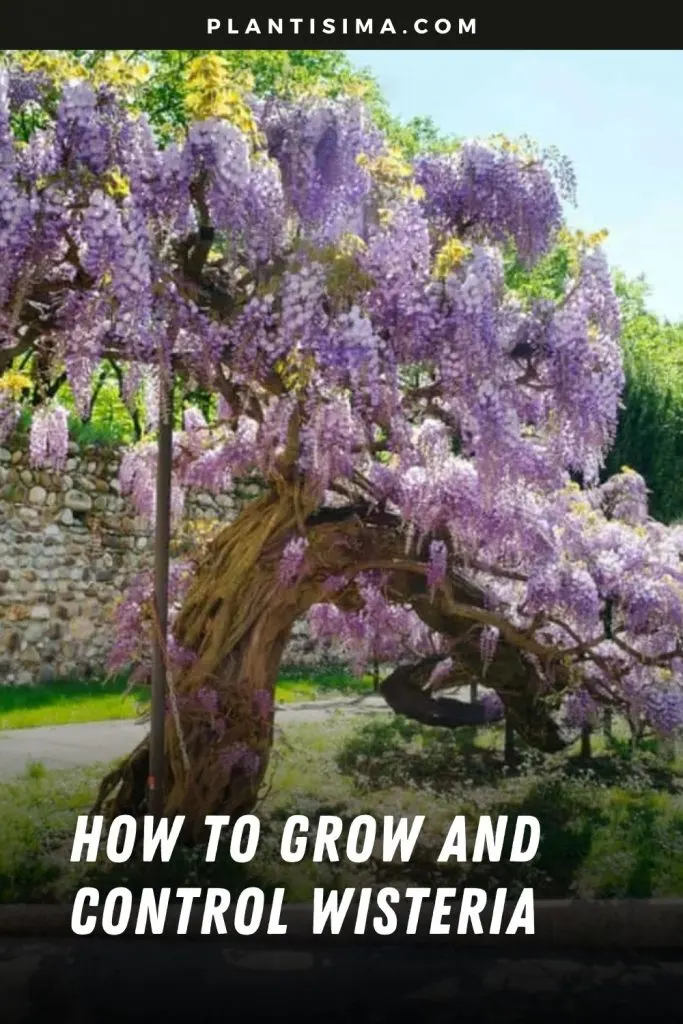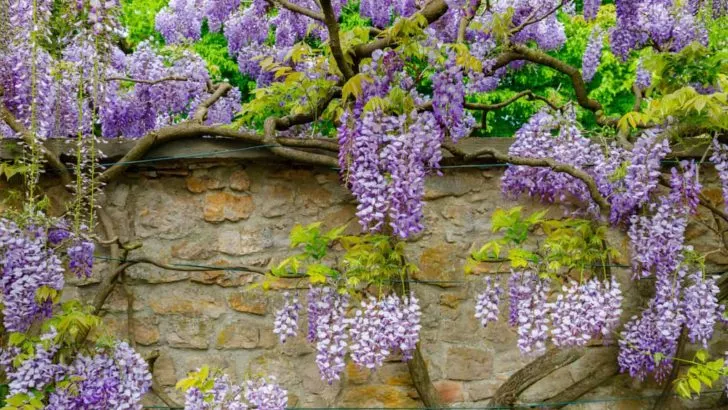Have you ever seen a wisteria vine in full bloom? If so, you were probably mesmerized by its cascading vines and vibrant, fragrant blossoms.
It’s no surprise that many gardeners choose to enhance their outdoor spaces with this magnificent flower!
If you’re one of them and are wondering how to grow your own wisteria, you’ve come to the right place.
I’ll show you how to tame this plant’s wild nature and give you all the planting and care tips you need. So, let’s dive right in!
How to Control Wisteria Growth
Before you even think about how to care for your wisteria, there’s one key lesson you need to learn first: how to control it.
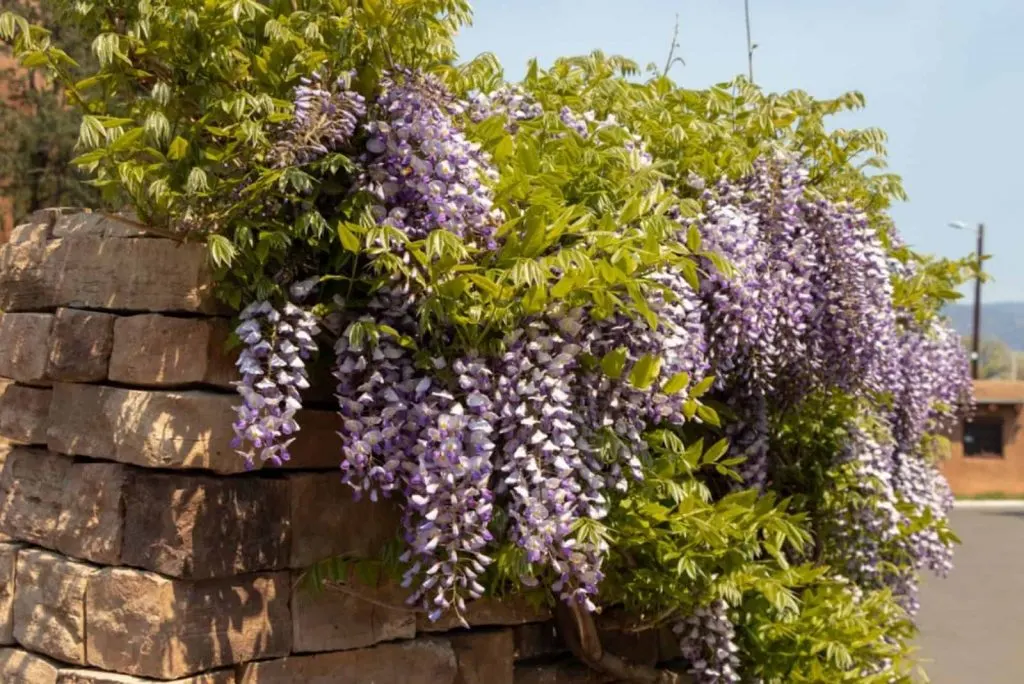
The two most popular wisteria varieties—Wisteria sinensis (Chinese wisteria) and Wisteria floribunda (Japanese wisteria)—are incredibly invasive .
These climbers grow aggressively, often posing a threat to nearby structures and native plants. Left unchecked, they can overwhelm trees and surrounding flora.
That doesn’t mean you can’t enjoy the beauty of wisteria in your garden—it just means you’ll need to keep it pruned and carefully monitor its growth. Here’s how to do that!
Summer Pruning Tips for Wisteria
If you decide on one of the invasive varieties, you’ll need to prune your wisteria twice a year. This will help prevent its roots from spreading too far.
These pruning tips also apply if you want to shape your wisteria or extend its blooming period.
How to Prune in Summer
The first blooms typically appear in April, with flowering usually lasting until May. Once the flowers fade, it’s time for your first pruning.
Your main goal is to trim the new shoots back to around 6 inches (15 cm). You’ll also want to remove any excess shoots from the center of the vine.
Additionally, if you spot suckers sprouting from the roots, which is likely, you’ll need to remove those too.
How to Prune in Winter
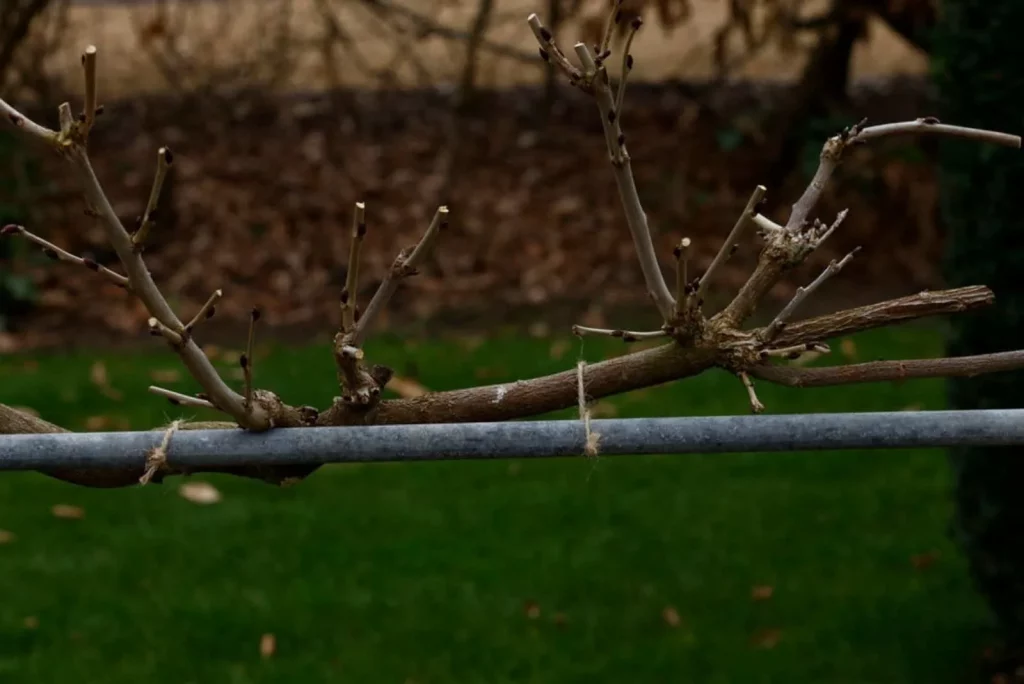
Even after summer pruning, wisteria doesn’t stop growing. This is a critical time because the plant can quickly become unruly.
Wait until late winter to start cutting back again. It’s also easier to prune in winter since the vine loses its leaves, giving you a clear view of the branches.
Focus on the side shoots growing from the main stem. Remove these, leaving only branches with no more than five buds each.
You can also shape the plant at this point, as crowded branches don’t do wisteria any justice.
Managing Wisteria Roots
Wisteria can grow up to 30 feet (9 meters) tall, sending out extensive anchoring roots to stabilize itself. These roots are notorious for damaging nearby structures.
The real issue lies in the fact that wisteria can regenerate from just a tiny fragment of its roots, making it tricky to control.
To avoid headaches down the road, plant your wisteria away from walls, pathways, and pipelines. You can also install corrugated metal barriers to redirect its roots away from important structures.
Another great option is to grow wisteria in a container—a method I highly recommend! Just make sure to provide it with a sturdy trellis for those magnificent blooms to climb.
If you ever need to remove an invasive wisteria, it’s not as simple as pulling out every root. You’ll need to carefully cut the main stem close to the ground and apply an herbicide directly to the cut.
Best Wisteria Varieties to Grow
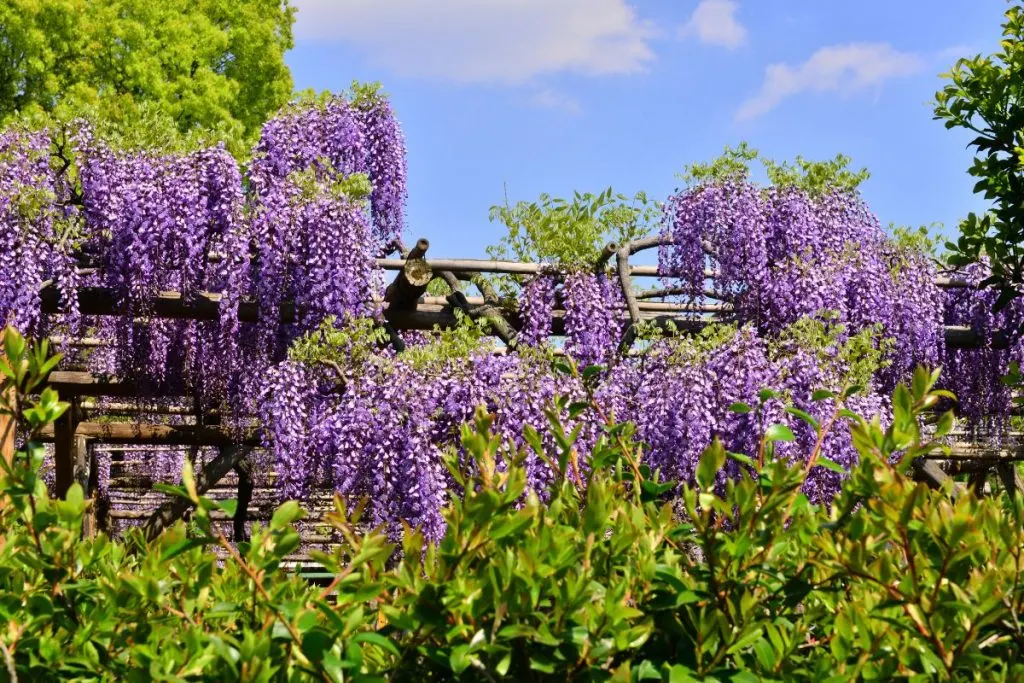
While wisteria can be a breathtaking addition to your garden, it’s wise to opt for native varieties like Wisteria frutescens or Wisteria macrostachya to prevent potential damage.
Let’s take a closer look at these beautiful and less aggressive options.
Wisteria frutescens (American Wisteria)
Native to the southeastern United States, Wisteria frutescens can climb up to 30 feet (9 meters) if given the right growing conditions.
Its bloom season starts in late spring, but it may even reward you with a second set of bluish-purple flowers in late summer.
Two standout cultivars include ‘Nivea,’ known for its large white flowers, and the ever-popular ‘Amethyst Falls,’ famous for its gorgeous lavender blooms.
Wisteria macrostachya (Kentucky Wisteria)
If you live in a colder climate, Wisteria macrostachya is a hardy choice. It starts blooming later than most, usually around June.
This variety grows up to 25 feet (8 meters) tall and produces three sets of flowers throughout the season.
Top picks include ‘Blue Moon’ and ‘Aunt Dee,’ both featuring violet-blue flowers, as well as ‘Clara Mack,’ which boasts stunning white blooms.
How to Plant Wisteria
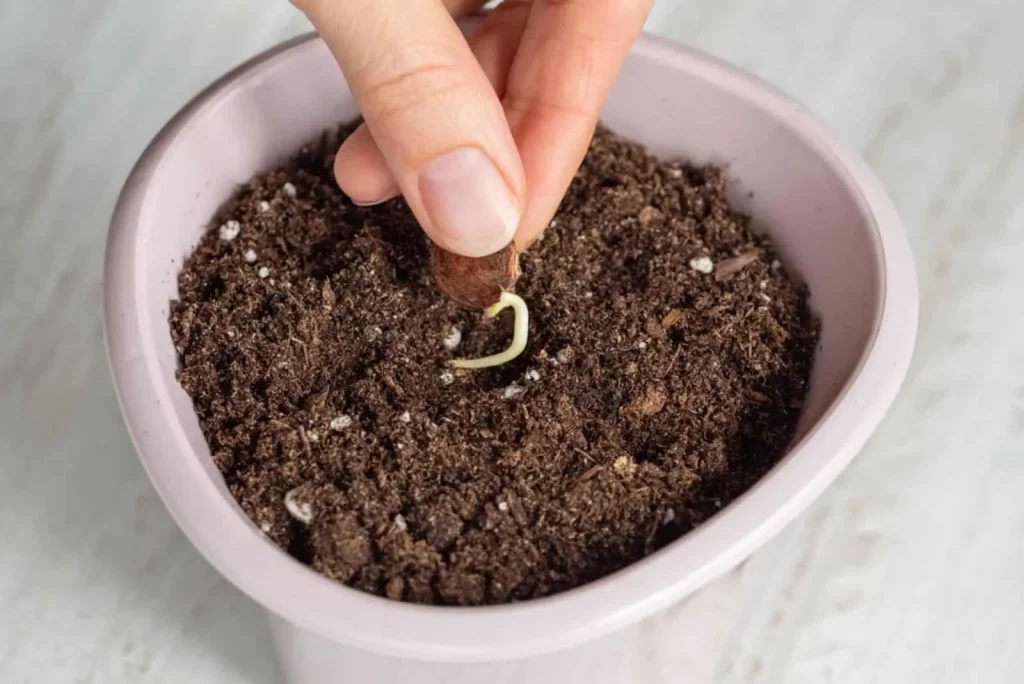
Wisteria needs plenty of sun to thrive, so choose a spot in your garden that gets full sun exposure, ideally on the south or west side.
Whenever you spot wisteria blooming, you can be sure that the long, cold winter is behind you and better days are ahead!
Where to Plant
When planting wisteria, remember two things: keep it away from nearby infrastructure, and plant it in a sunny location.
Although wisteria can tolerate partial shade, it thrives best in full sun.
Planting Tips
Plant your wisteria in spring or summer in rich, well-drained soil. You can add compost for extra nutrients.
Dig a hole large enough to accommodate the root ball and twice as wide. Place the root ball in the hole, backfill with soil, and water thoroughly. Apply mulch to retain moisture and suppress weeds.
If planting multiple wisterias, leave about 10 feet (3 meters) between each one.
Supporting Your Wisteria
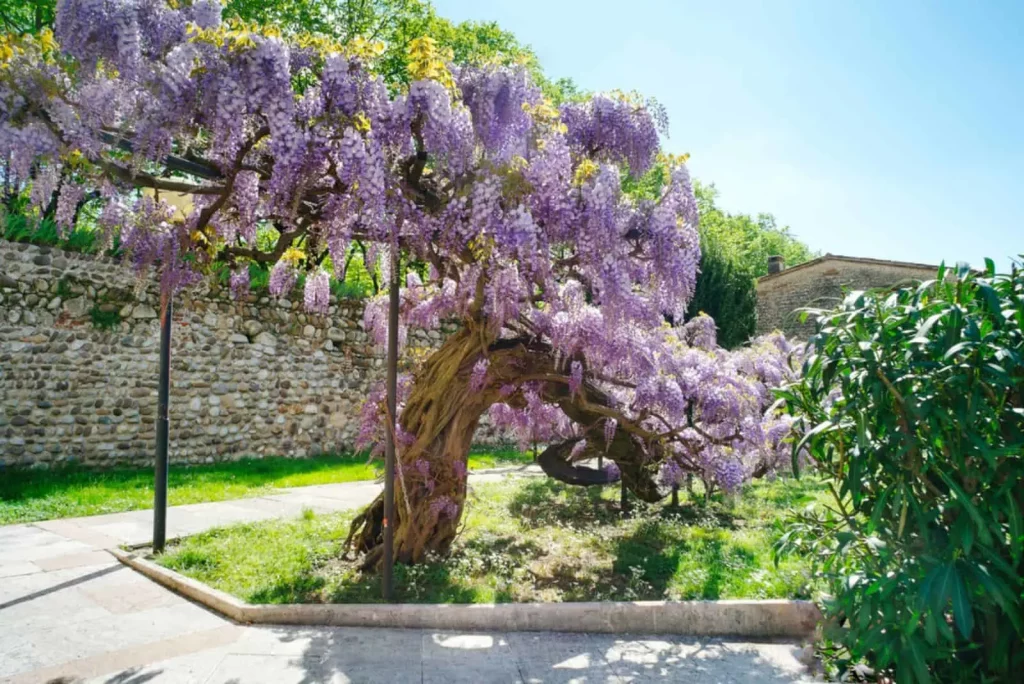
Wisteria is a climber, but its vines need support to grow up walls or similar structures. It works well on fences, but you can also use trellises or arbors for support.
Growing Wisteria as a Tree
One of the coolest things about wisteria is that you can train it to grow into a tree. Here’s how:
1. Insert a wooden stake about 12 inches (30 cm) into the ground next to the plant, leaving a small gap between the stake and the stem.
2. Use garden tape to secure the stake to the stem, adjusting the ties every few months as the stem grows.
3. Prune any wayward branches to shape the plant.
4. After flowering, prune heavily to encourage more blooms.
With proper care and support, your wisteria will thrive and bloom beautifully for years to come.
